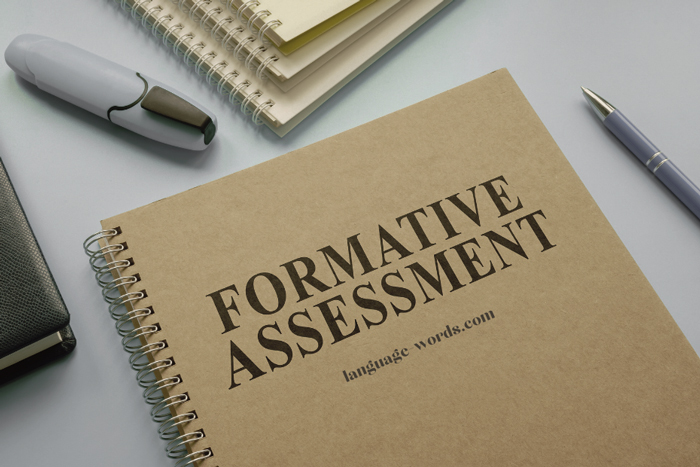Formative assessment is an essential tool in the education system that allows teachers to gather valuable insights into their students’ learning progress. As an experienced educator, I have come across various types of formative assessment methods that have proven to be effective in enhancing student learning. In this article, I will delve into the different types of formative assessment and explore how they can be implemented in the classroom to support student growth and development.
From traditional methods such as quizzes and exit tickets to more innovative approaches like peer assessment and self-reflection, there is a wide range of formative assessment techniques available to educators. Each type offers unique benefits and can be tailored to suit different subjects and grade levels. Throughout this article, I will discuss the characteristics and advantages of these various types of formative assessment, providing practical tips and examples for teachers to implement in their own classrooms.
By understanding the different types of formative assessment and their respective benefits, educators can create a more engaging and effective learning environment for their students. So, let’s explore the world of formative assessment and discover how it can revolutionize the way we assess and support student learning.
Types of Formative Assessment
When it comes to assessing students’ learning progress, there are several types of formative assessment that educators can utilize. These assessments provide valuable insights into students’ understanding, allowing teachers to make informed instructional decisions. Let’s explore some of the key types of formative assessment:

- Quizzes and Tests: Traditional quizzes and tests are commonly used formative assessment methods. They provide immediate feedback to students and teachers, highlighting areas of mastery and areas that need improvement. These assessments can be in the form of multiple-choice questions, short-answer questions, or even oral assessments.
- Exit Tickets: Exit tickets are brief assessments that students complete before leaving the classroom. They aim to gauge students’ understanding of the lesson or unit. These assessments are a quick way for teachers to assess whether students have grasped the key concepts and identify any misconceptions that may need to be addressed.
- Observations: By observing students during class activities, discussions, and group work, teachers can gather valuable information about their understanding and engagement. This type of formative assessment allows teachers to identify individual strengths and weaknesses and tailor their instruction accordingly.
- Peer Assessment: Peer assessment involves students providing feedback and evaluating the work of their peers. This not only promotes a collaborative learning environment but also helps students develop critical thinking and communication skills. Peer assessment can take various forms, such as group projects, self-assessment, or peer-review of written assignments.
- Self-Reflection: Encouraging students to reflect on their own learning is another formative assessment technique. By having students assess their own progress, set goals, and identify areas for improvement, teachers can empower them to take ownership of their education. Self-reflection activities can include journals, learning logs, or even self-assessment checklists.
Each type of formative assessment offers unique benefits. Educators can choose the methods that best align with their teaching style, subject, and grade level. By incorporating a variety of formative assessment techniques into their classrooms, teachers can create a more engaging and effective learning environment for their students.
What is Formative Assessment?

Definition of Formative Assessment
Formative assessment is an essential tool used by educators to gauge students’ understanding and learning progress throughout a lesson or unit of study. Unlike summative assessment, which evaluates the final outcome of learning, formative assessment focuses on providing ongoing feedback to support learning and identify areas where students may need additional help or clarification.
Purpose of Formative Assessment
The purpose of formative assessment is multifaceted. It serves to:
- Monitor student progress and understanding: By regularly assessing students’ understanding during the learning process, teachers can identify any misconceptions or gaps in knowledge. This allows them to provide timely interventions and adjust their instruction accordingly.
- Promote active learning: Formative assessment encourages student engagement and participation. It prompts students to reflect on their learning, analyze their strengths and weaknesses, and take ownership of their educational journey.
- Inform instructional decisions: Through formative assessment, teachers gather valuable information about students’ needs and learning preferences. This data helps them tailor their teaching strategies, select appropriate resources, and design meaningful learning experiences.
- Foster a growth mindset: Formative assessment fosters a growth mindset by emphasizing the idea that intelligence and abilities can be developed with effort and practice. It encourages students to view mistakes as opportunities for growth and improvement.
Formative assessment plays a vital role in promoting continuous learning and improvement. By regularly assessing students’ understanding and providing timely feedback, teachers can create a more effective and engaging learning environment for their students.
Benefits of Using Formative Assessment
Formative assessment is a powerful tool in the educational arsenal of teachers. By incorporating this practice into their teaching methodology, educators can reap a multitude of benefits that enhance student learning and growth. Let’s explore some of the key benefits of using formative assessment.

Individualized Feedback
One of the primary benefits of formative assessment is the ability to provide individualized feedback to students. Unlike traditional assessments that focus on the end result, formative assessment allows me to continuously monitor and evaluate each student’s progress. This real-time feedback enables me to identify areas where students may be struggling and provide timely interventions. With this individualized approach, I can modify my instructional strategies to meet the unique needs of each student, promoting a more inclusive and effective learning environment.
Student Engagement
Another significant advantage of formative assessment is its ability to foster student engagement. Through the use of various formative assessment techniques such as interactive discussions, self-assessment, and peer feedback, I can actively involve students in the learning process. By encouraging students to take ownership of their learning, formative assessment promotes a sense of responsibility and involvement. This active engagement not only enhances student motivation but also deepens their understanding of the subject matter.
Targeted Instruction
Formative assessment allows me to gather valuable data on student performance, enabling me to tailor my instruction and interventions accordingly. By assessing the needs, strengths, and weaknesses of my students on an ongoing basis, I can identify specific areas that require additional focus. This targeted instruction ensures that I can effectively address any misconceptions or gaps in knowledge. With the power to adapt my teaching strategies based on real-time feedback, I can provide the right level of support and guidance to help my students succeed.
The benefits of using formative assessment are substantial. Through individualized feedback, enhanced student engagement, and targeted instruction, formative assessment optimizes the teaching and learning experience. By incorporating these practices into my classroom, I can create a more dynamic, inclusive, and effective educational environment for my students.
Types of Formative Assessment
Formative assessment is a crucial tool in education, allowing teachers to monitor student progress, provide targeted feedback, and adapt instruction to meet individual needs. In this section, I will delve into different types of formative assessment techniques that can be effectively used in the classroom.

Quizzes and Tests
Quizzes and tests are commonly used formative assessment tools that provide valuable insight into student understanding and mastery of content. By administering short quizzes or mini-tests, I can quickly assess what concepts students have grasped and identify areas that require further instruction. The key is to design quizzes that align with the learning objectives and deliver immediate feedback to students. This allows me to modify my teaching strategies in real-time, ensuring that each student is on track to meet their learning goals.
Exit Tickets
Exit tickets are a simple yet powerful way to gauge student comprehension at the end of a lesson or unit. I often use exit tickets to assess whether students have met the learning objectives for that particular session. By asking a few targeted questions that require brief responses, I can gain valuable insights into what students have learned and whether they still have any lingering misconceptions. These insights help me adjust my instruction for the next session and address any gaps in understanding.
Observations
Observations provide an opportunity to gather real-time data on student performance and behavior in the classroom. By actively observing students as they work on tasks or engage in discussions, I can gain a deeper understanding of their strengths, challenges, and learning styles. This allows me to tailor my instruction to accommodate different learning needs and provide timely feedback. Furthermore, observations also allow me to foster a positive and supportive classroom environment, promoting student engagement and collaboration.
Self-Assessment
Encouraging students to engage in self-assessment promotes metacognitive skills and empowers them to take ownership of their learning. By providing specific criteria and rubrics, students can evaluate their own work and reflect on their progress. Self-assessment activities can include things like student reflections, goal setting, and self-checklists. Through self-assessment, students learn to identify their strengths and areas for improvement, fostering a growth mindset and developing lifelong learning skills.
Formative assessment should be a regular part of classroom practice, as it provides valuable information for both students and teachers. By employing a range of formative assessment techniques such as quizzes and tests, exit tickets, observations, and self-assessment, I can create a learning environment that is responsive, engaging, and tailored to the needs of each student.
Remember, formative assessment is not about judgment or evaluation, but rather about understanding and growth. It is a powerful tool for promoting student learning and fostering a culture of continuous improvement.
Best Practices for Implementing Formative Assessment

Clear Learning Objectives
When incorporating formative assessment in the classroom, it is essential to have clear learning objectives in mind. This helps both you and your students stay focused on what needs to be achieved. By articulating specific goals for the lesson or unit, you provide a framework for designing effective assessments that align with desired outcomes.
To establish clear learning objectives:
- Determine what concepts or skills you want your students to understand or demonstrate.
- Break down these concepts or skills into measurable and actionable objectives.
- Share these objectives with your students at the beginning of the lesson or unit.
A clear understanding of the learning objectives enables you to select appropriate assessment methods and provide targeted feedback that addresses specific areas of improvement.
Varied Assessment Methods
Using a variety of assessment methods allows you to gather a more comprehensive picture of your students’ learning and progress. Different students have different strengths and learning preferences, so using a variety of methods can help you cater to their individual needs.
Consider incorporating the following assessment methods:
- Quizzes and tests: These can be used to assess knowledge and understanding of specific concepts or content.
- Exit tickets: These quick assessments at the end of a lesson or unit can provide insights into student comprehension.
- Observations: Paying close attention to student behaviors and interactions can offer valuable information about their understanding and engagement.
- Self-assessment: Encourage students to reflect on their own learning and progress, fostering metacognitive skills.
By employing a mix of assessment methods, you can gather a more comprehensive view of student progress and adapt your instruction accordingly.
Timely Feedback
Providing timely feedback is crucial for the effectiveness of formative assessment. Timely feedback helps students understand their strengths and weaknesses, provides guidance for improvement, and boosts their motivation and confidence.
Tips for giving timely feedback:
- Provide feedback promptly after assessments to ensure it is relevant and meaningful.
- Be specific in your feedback, highlighting areas of success and areas that need improvement.
- Offer actionable suggestions for improvement, providing students with clear steps they can take to enhance their learning.
Timely feedback enables students to make immediate adjustments and progress towards their learning objectives.
Remember, implementing formative assessment in your classroom requires a deliberate focus on clear learning objectives, varied assessment methods, and timely feedback. By following these best practices, you can create a responsive and engaging learning environment that supports your students’ growth and achievement.
Conclusion
Implementing formative assessment in education is a crucial step towards creating a responsive and engaging learning environment that supports student growth and achievement. By having clear learning objectives and breaking them down into measurable and actionable objectives, educators can ensure that students are progressing towards their goals.
Using varied assessment methods, such as quizzes, tests, exit tickets, observations, and self-assessment, provides a comprehensive view of student progress. This allows educators to gather valuable insights into their students’ strengths and weaknesses, enabling them to provide targeted support and intervention when needed.
Timely feedback is another essential component of effective formative assessment. By providing feedback promptly, educators can help students understand their areas of strength and areas for improvement. This feedback empowers students to take ownership of their learning and make the necessary adjustments to achieve their goals.
By following these best practices, educators can create a dynamic learning environment that fosters student success. Implementing formative assessment strategies not only enhances student learning but also promotes a culture of continuous improvement within the classroom.

